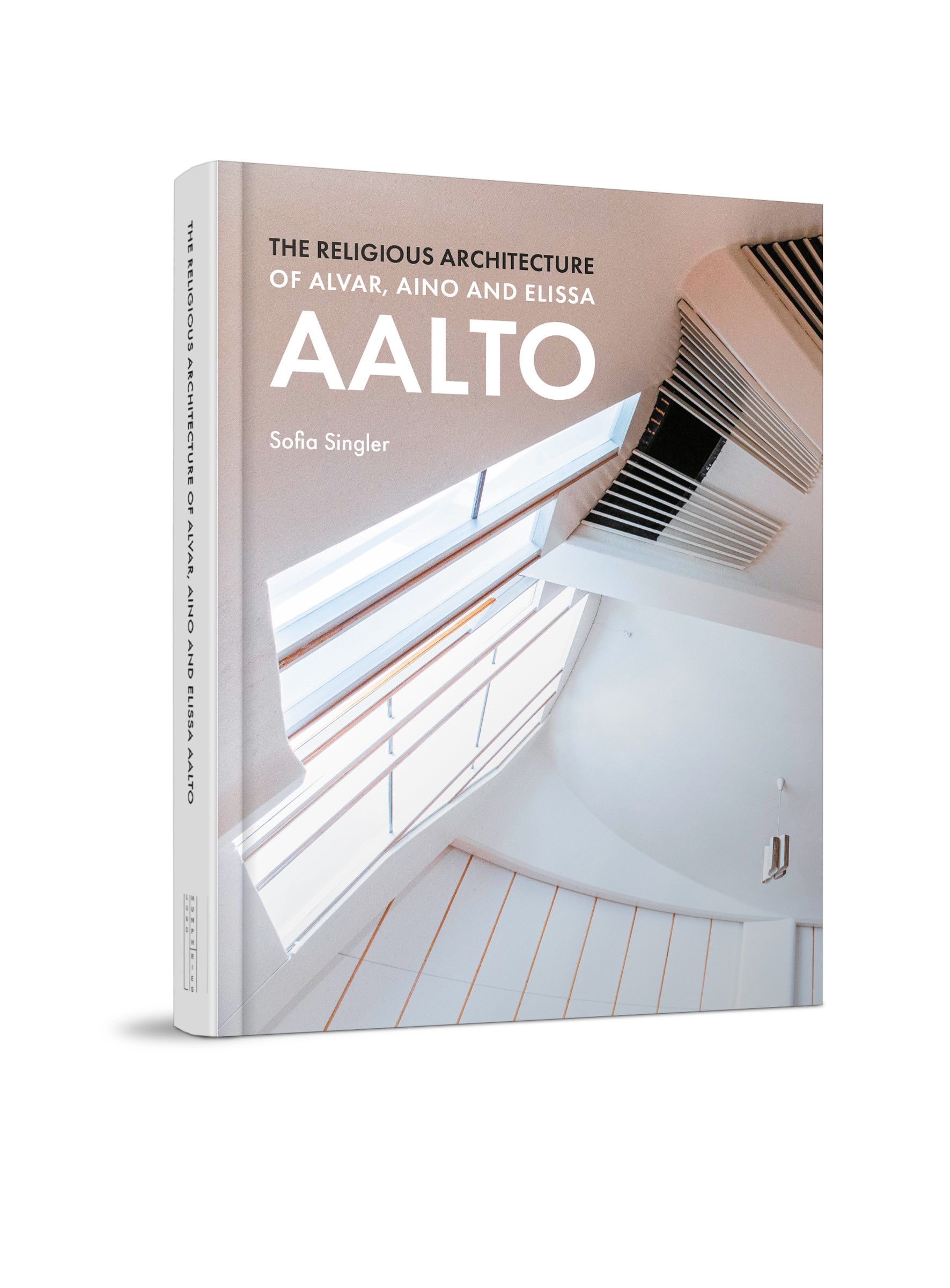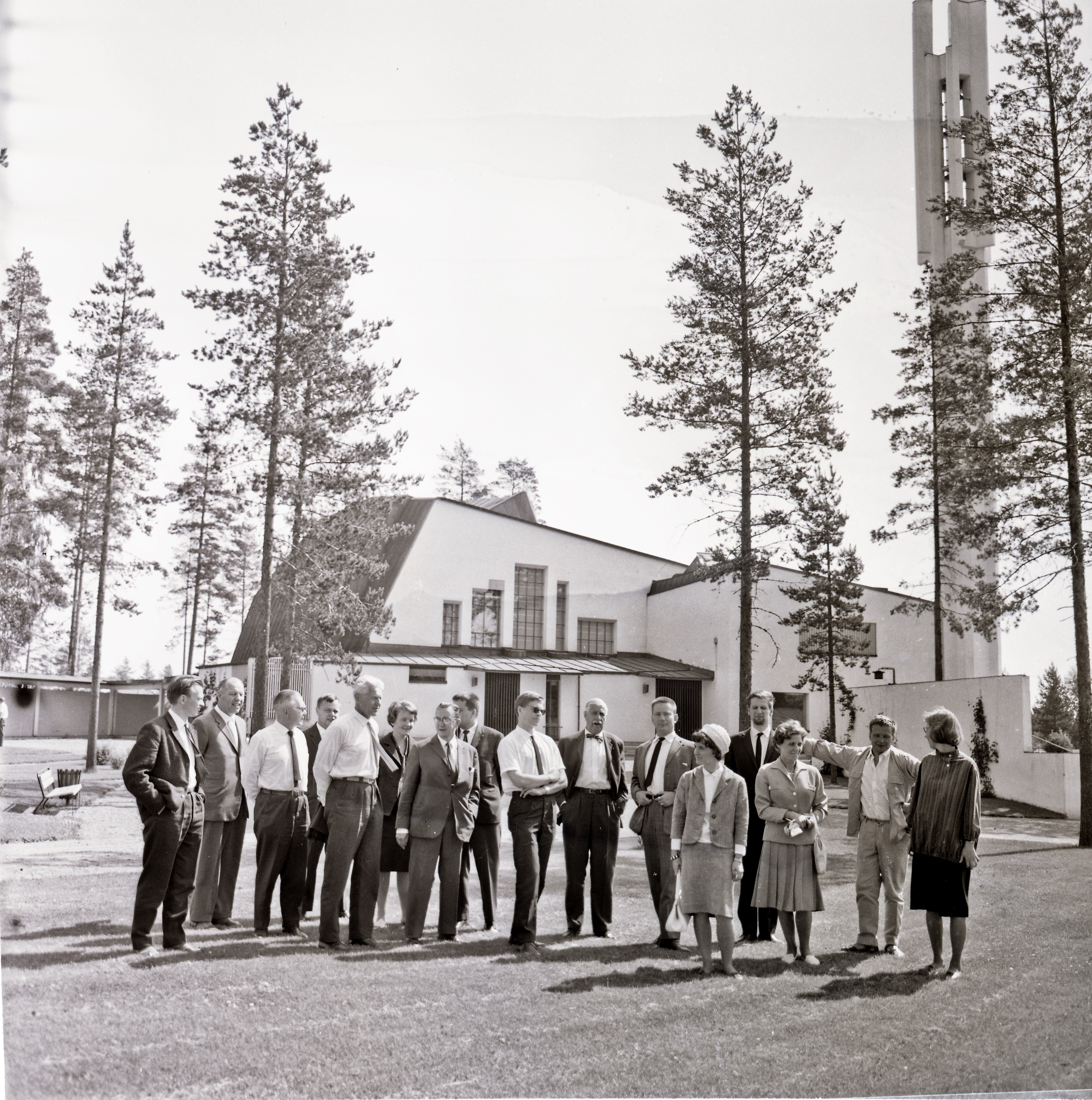Submitted by M.L. R. Grove on Tue, 31/10/2023 - 11:26
The first critical account of Aalto’s religious modern architecture: https://www.lundhumphries.com/collections/coming-soon/products/the-religious-architecture-of-alvar-aino-and-elissa-aalto
This book offers the first critical account of Alvar, Aino and Elissa Aalto’s religious modern architecture. The Aaltos’ ecclesiastical oeuvre is viewed as an evocative subgenre of the practice's portfolio, but its relationship to religion has eluded enquiry. Where previously discussed, the longstanding collaboration between the Aaltos and the Church has been put down to reciprocal expediency, and the buildings perceived as spatially and structurally stirring experiments, yet devoid of religious meanings or implications. The idiosyncratic plasticity of the Church of the Three Crosses (1955–58) in Imatra, Finland—the most famous and architecturally impressive of Aalto-designed churches—is cited as ultimate evidence of the Aaltos’ exploitation of the religious brief for the creation of a 'sculptural irrationality'.
This book challenges the assumed autonomy of Studio Aalto’s ecclesiastical oeuvre from religion. Analysing designs for churches, parish centres, funerary chapels and cemeteries in Finland, Denmark, Germany and Italy, the book shows that Aalto’s engagement with religion transcended artistic opportunism. The book addresses Aalto’s sacred oeuvre in its entirety, yet pays particular attention to the Church of the Three Crosses, broadly considered the apotheosis of Aalto’s sacred career. Through a detailed analysis of the religious actors and factors that shaped the design and construction of Aalto’s sacred works—from local parish building committees to bishops, and from liturgical reform movements to post-war debates on sacred art—this book shows that religious influences were neither extrinsic nor peripheral to Aalto’s modernism, but intrinsic and intimately related to it. The study of previously uncovered primary archival materials establishes that Aalto’s engagement with the Church was a consciously and productively symbiotic partnership which drew from shared interests and values, yet which also encompassed compromise and conflict. The resultant buildings neither glorify nor deny institutional religion — instead, this book argues, they challenge rigid dogmatism in religion as much as in modern architecture.
About the author
Dr Sofia Singler is an Assistant Professor at the Department of Architecture, University of Cambridge, where she teaches modern architecture. Trained as both an architect and an architectural historian, she has collaborated with the Alvar Aalto Museum in Finland for more than a decade. Previously, she held the Edward P. Bass Scholarship at the Yale School of Architecture and a Gates Trust Doctoral Scholarship at Cambridge.
Praise for the book
“Singler’s meticulous research into the making of Studio Aalto’s numerous religious buildings reveals their entanglement with state-planning policies and geopolitics of the post-WWII era, making us consider their role and importance within the overall output of the office as well as that of Finland’s postwar church-building boom in general.”
Eeva-Liisa Pelkonen, Yale University, author of Alvar Aalto: Architecture, Modernity and Geopolitics
“Far from marginalising religion in the context of modern architecture, Singler confronts it head-on in this richly illustrated analysis of Studio Aalto’s work. Here she demonstrates that, despite Alvar Aalto’s own scepticism, religious influences were both intrinsic and intimately related to the Studio’s collective ethos.”
Neil Jackson, Professor Emeritus, University of Liverpool, former President of the Society of Architectural Historians of Great Britain (SAHGB)


